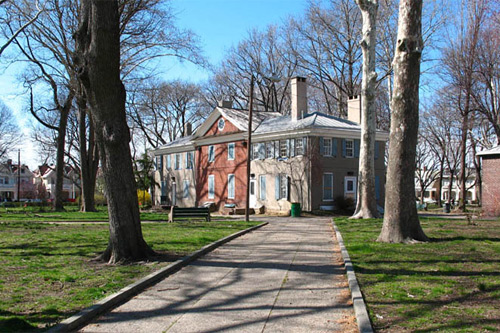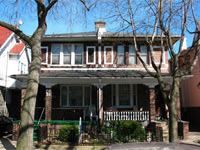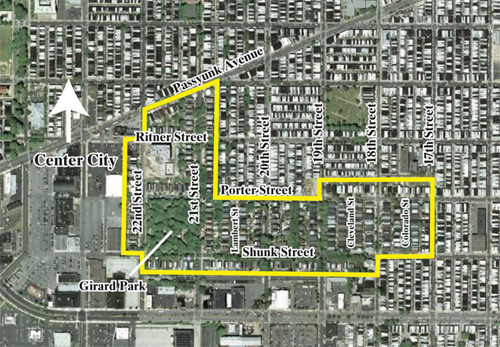13 May 08: Girard City
 Stephen Girard (1750-1831): merchant, financier, philanthropist. Born in France, he came to Philadelphia in 1776. Girard gave strong support to both the First and Second Banks of the United States. Gentilhommiere, located at present day 21st & Shunk in South Philadelphia, was his country house after 1797. Girard added the center and western section of the house and operated a 583 acre farm here. At the time, this area was part of Passyunk Township and was sparsely settled. When Girard died in 1831, he was the wealthiest man is America with an estate valued at $6,000,000, a staggering sum in those days. In his will he left his money to various charitable institutions but the lion share went to the city of Philadelphia on condition that they build a school for poor white boys, which the city did. The classically inspired Girard College, designed by Thomas U. Walter, opened in 1848. Another stipulation in the will states that the City could not sell any property, including Girard's house and farm. This restriction led the Board of Directors of City Trust the body responsible for the oversight of the estate to create the development of Girard Estate as a community of rental properties in 1906.  The Girard Estate district, whose planning was loosely
based on the "Garden City" concept by Ebenezer Howard (1850-1928), was envisioned as a low density, semi-suburban setting, with modest lawns and cottage-like
twin houses. The architect responsible for the varied housing styles found in the district was James H. Windrim (1840-1919), himself a graduate of Girard
College. In 1867, he opened his own firm and won the competition for the Masonic Temple in Philadelphia, gaining him considerable notoriety. Collaborating with
Windrim on Girard Estate was his son John T. Windrim (1866-1934) who had joined up with his father's firm in 1882. The Girard Estate district, whose planning was loosely
based on the "Garden City" concept by Ebenezer Howard (1850-1928), was envisioned as a low density, semi-suburban setting, with modest lawns and cottage-like
twin houses. The architect responsible for the varied housing styles found in the district was James H. Windrim (1840-1919), himself a graduate of Girard
College. In 1867, he opened his own firm and won the competition for the Masonic Temple in Philadelphia, gaining him considerable notoriety. Collaborating with
Windrim on Girard Estate was his son John T. Windrim (1866-1934) who had joined up with his father's firm in 1882.The earliest houses, built in 1906 and 1907 along the north side of Porter Street, reflect a late 19th century view of architecture. The stepped parapets and the attachment of the bay windows show an attempt to create something new, but demonstrate the lack of modern vocabulary. Later homes, in which the Arts and Crafts and Prairie styles are evident, represent a 20th century approach to house design. This shift of architectural style may illustrate the difference between the work of father and son. A part of the self contained community included a public library (20th and Shunk) and a public school (22nd and Ritner) both built in 1913. By 1916 the Girard Estate development had reached its full build. The Girard Estate development encountered hard times during the depression and sought court approval to sell the homes to the public. In July of 1950, that approval was granted and the Board of Directors sold the first of the 481 homes contained in the district for the first time. The architectural styles of the homes within the district are varied and reflect the popular styles of the early 20th century. Predominant among them is the Colonial Revival Style but others represent a wide variety of tastes. Some homes have an English influence with Jacobean and Tudor Revival styles. Some are of the Mission style of the American West and the Prairie School of the Midwest. Arts & Crafts and Craftsman Bungalow are also represented. Still others have a Mediterranean feel to them. Most of the houses have different elements of other styles incorporated in them giving a unique eclectic feel. Despite a few historically inappropriate alterations and add-ons, most of the homes in Girard Estate remain fairly original and faithful to the father and son team that dreamed them up a century ago. The neighborhood itself is fairly stable with the biggest problem being parking. This early take on the streetcar suburb has abandoned the trolley for the automobile long ago. Public transportation to and from Center City and points beyond is readily available via bus routes that run up and down the numbered streets.  Take a stroll through this neighborhood in South Philly near where I call home. I think you'll be pleasantly surprised. –JMM GO TO PHOTOS. |
